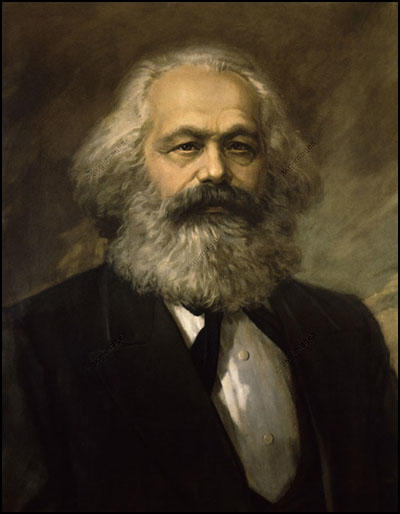 |
| Karl Marx
http://spartacus-educational.com/00marx.jpg
|
The "chocunism" game taught us about Karl Marx and his theory of communism, and later in the class period, we learned about Adam Smith's theory of the invisible hand. Both of these men wanted to help the poor, but they had different methods of doing this. Karl Marx believed that a government run by capitalism could turn into socialism, and eventually communism, by itself. He said that the majority of the population would not tolerate the divisions between social classes and would use any means necessary to create communism. Adam Smith believed that the poor would be helped by the "invisible hand." He thought that if the government leaves the economy alone, buisness owners will all compete to see who can create the best quality products at the most reasonable prices. If this works out, then no one will be poor and everyone will have some money. This would definitely help the poor because they would be able to afford the good quality products, when they wouldn't have been able to in a system of capitalism. Both of these men had different opinions of how the poor could gain more money, but which theory would work out more effectively in reality?
This video is an animated explanation of Smith's invisible hand theory, also described above.
Personally, I think Adam Smith's theory of the invisible hand is better than Karl Marx's theory of communism. Both are well thought out, but Smith's is more effective in real life. Marx's theory of communism was used in Russia, North Korea, China, and Cuba, but these governments all forced their population into becoming communists. This is different from the theory Marx had proposed because Marx said that the people would choose communism if given the option, but these people did not choose it because their governments were using force. The theory was not effective in these countries, but Smith's theory was effective when tried out in reality. More people subscribed to Smith's invisible hand because it left the businesses to compete amongst each other, and after a few months, the best businesses would be able to sell high quality products at reasonable or low prices. Businesses would make more money because they would have the choice to expand their store and change their products to gain more customers. Also, the people on the bottom would increase their wealth because they would be able to afford products at the most popular stores. This theory is effective, and the only other option is capitalism. The rich would choose this system because they would still be on the top of the social ladder, but it would not be fair for the poor, so it is not a good system. Karl Marx and Adam Smith helped changed how people look at "rich versus poor," and the fun activity we did in class helped me decide which theory was more effective.
No comments:
Post a Comment